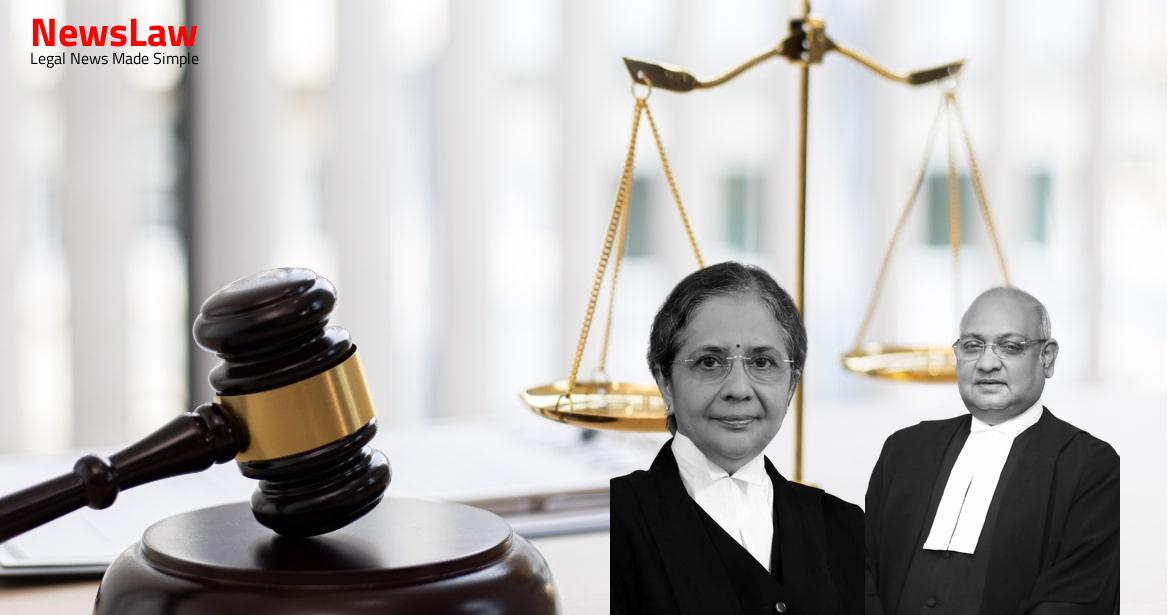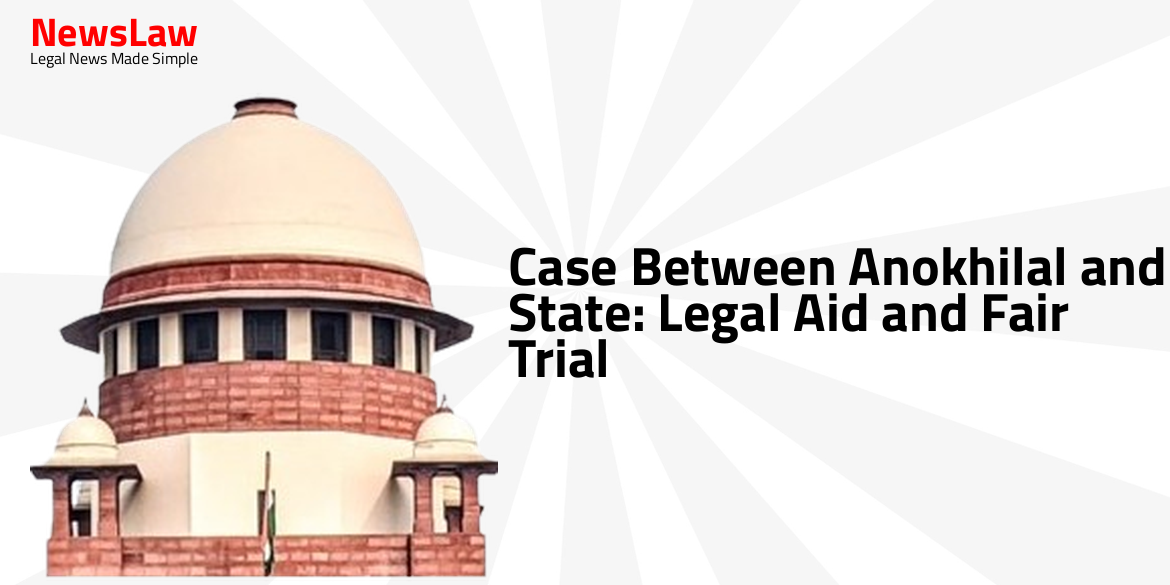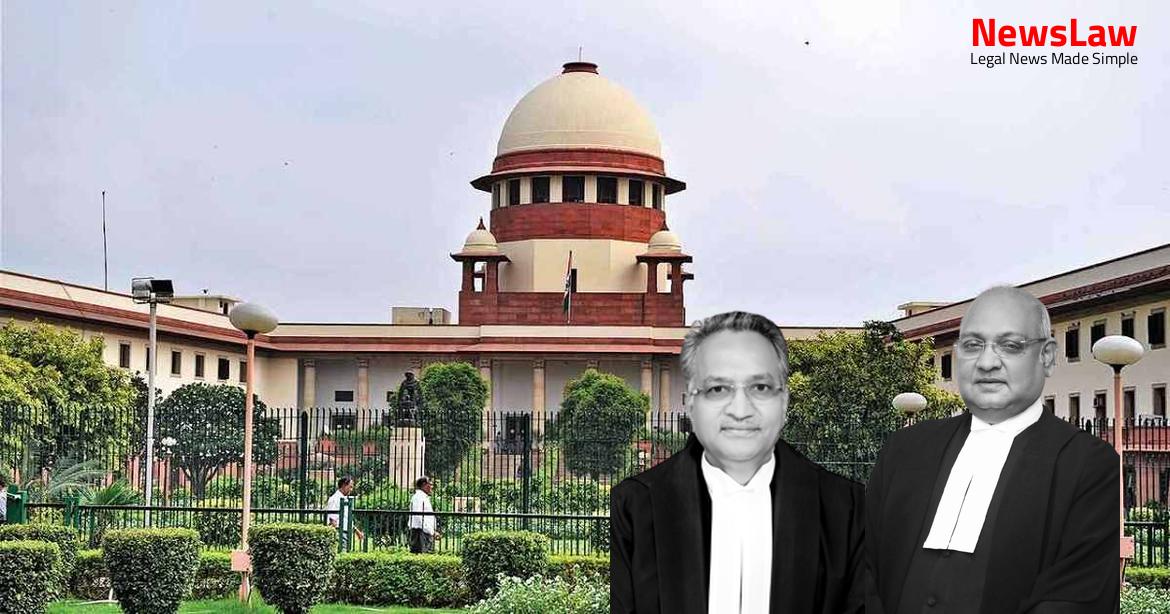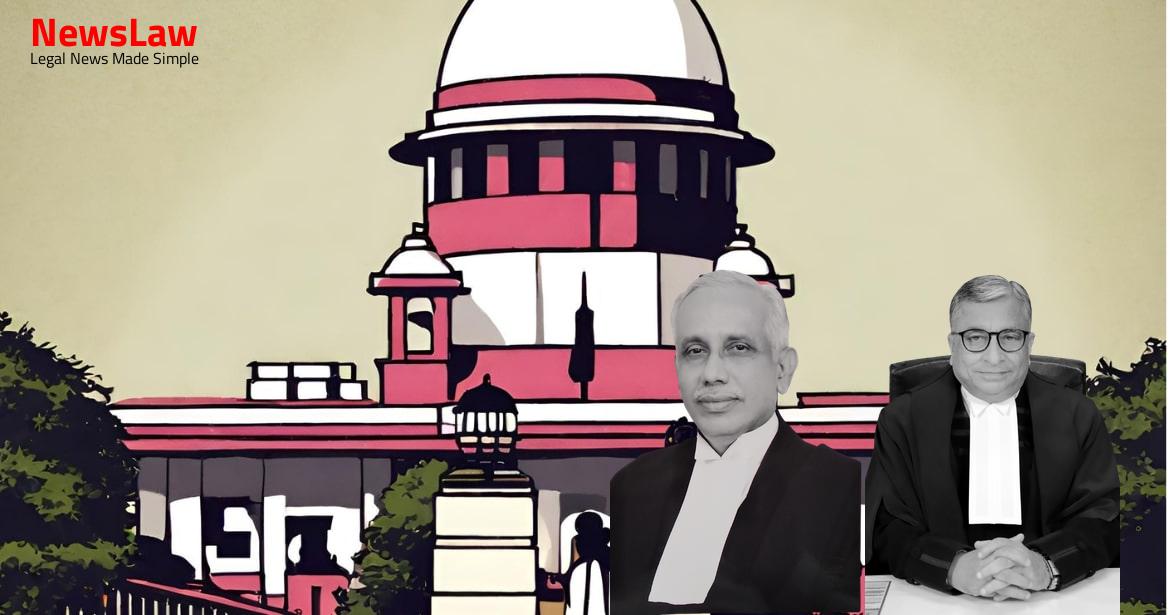Explore the detailed legal analysis conducted by the court in a recent homicide case, focusing on the chain of circumstances presented as evidence. The court’s thorough evaluation of the evidence, including witness testimonies and material findings, sheds light on the complexities of criminal prosecution and the standards of proof required to establish guilt beyond a reasonable doubt. Stay tuned to unravel the intricate legal discussions and the significance of the court’s judgment in this case.
Facts
- Accused-appellant has appealed against the judgment and order of the High Court dated 09.11.2009
- High Court affirmed the judgment and order of the Additional Sessions Judge convicting the accused-appellant of offences under Sections 302 and 201 IPC
- Accused-appellant has been sentenced to life imprisonment for the offence under Section 302 IPC
- The chain of circumstances connecting the appellant with the killing of the victim Ravi has been found proved by both Trial Court and High Court
Also Read: Legal Authority and Res Judicata in Representation Matter
Arguments
- The prosecution’s case against the appellant is questioned due to various doubts and shortcomings in the evidence presented.
- The seizure of the appellant’s driving license near the dead body lacks clear jurisdictional verification.
- The conviction based on last seen evidence, recovery of the driving license, and the identification of the dead body is argued to be inconclusive with several lacunae in the chain of circumstances presented.
- The argument for extending the benefit of doubt, similar to co-accused no. 2, is made in favor of the appellant.
- The respondent’s counsel supports the decisions of the Trial Court and High Court.
- Testimony and evidence linking the appellant to the deceased through communication on the day of the incident are highlighted.
- Doubts raised regarding identification of the dead body by PW-10 and lack of corroborating evidence are emphasized.
- The recovery of the appellant’s driving license with the dead body is a crucial prosecution point despite the absence of eyewitnesses to the incident.
- A contradictory statement by PW-7 regarding a conversation with the deceased on a later date casts doubt on the identity of the dead body found earlier.
Also Read: Court’s Legal Analysis on Filing Counter-Claim
Analysis
- The prosecution’s failure to examine the person who first informed about the location of the dead body and the absence of the seal of jurisdictional Court on the Mahazar document are considered insignificant.
- The chain of circumstances presented in the case is deemed complete, including the deceased taking PW-1’s vehicle, the appellant’s communication with the deceased on the material date, eyewitnesses seeing the appellant with the deceased in the car, the appellant’s driving license found near the dead body, identification of the body by a witness, and the appellant’s involvement with the car as confirmed by testimonies.
- The findings of fact by the Trial Court and the High Court are considered coherent and free from any substantial flaws, hence no interference from the Supreme Court is warranted.
- The appeal is ultimately dismissed as the concurrent findings of fact are upheld after a thorough evaluation of the evidence presented.
Also Read: Analysis of Conviction Based on Circumstantial Evidence
Decision
- All pending applications stand disposed of.
- No further orders are required in relation to the pending applications.
Case Title: NAZEER @ NAZEER MOHAMMED Vs. STATE REP BY INSPECTOR OF POLICE (2022 INSC 1038)
Case Number: Crl.A. No.-001216-001216 / 2011



